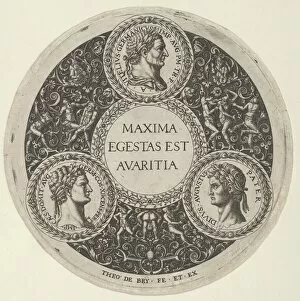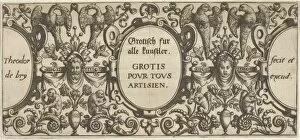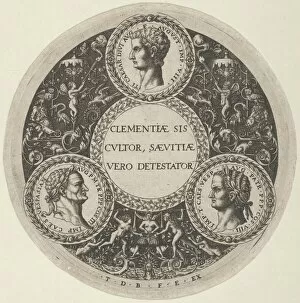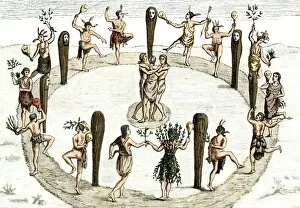Theodor De Bry Collection (#3)
Theodor de Bry, a renowned Flemish engraver and publisher, left an indelible mark on the world of art and exploration
For sale as Licensed Images
Choose your image, Select your licence and Download the media
Theodor de Bry, a renowned Flemish engraver and publisher, left an indelible mark on the world of art and exploration. His intricate engravings captured the essence of various historical events and cultures, providing valuable insights into the early days of European colonization. In one captivating engraving titled "Spanish seamen building caravel, " De Bry transports us back in time to witness the construction of a magnificent ship. The meticulous details showcase the dedication and skill required to navigate uncharted waters. Another masterpiece by De Bry is his map of the Americas, created between 1590-1601. This intricately designed piece offers a comprehensive view of this vast continent, highlighting its diverse landscapes and regions that were yet to be fully explored. One cannot overlook De Bry's depiction of Sir Walter Raleigh's expedition in 1585 on his map of Virginia. This significant event marked England's first attempt at establishing a permanent settlement in North America, forever changing history. Beyond historical events, De Bry also delved into biblical narratives with his enchanting engraving titled "Adam and Eve in the Garden of Eden. " Through his skilled craftsmanship, he brings to life this iconic tale with vivid imagery that captivates viewers' imagination. De Bry's fascination with indigenous cultures shines through in his hand-colored engraving titled "Native Indians Dancing. " This vibrant portrayal showcases their rich traditions and customs while honoring their connection to nature. Venturing beyond American shores, De Bry explores exotic lands like Islas de los Ladrones (Marianas Islands) in his work "Islands of Thieves. " With great attention to detail, he unveils these distant islands' mysteries while igniting curiosity about far-flung corners of our planet. In another remarkable piece called "A Chief Lord Roanoac, " taken from A Briefe and True Reportofthe New Found LandofVirginia by Thomas Hariot (1588), we catch a glimpse into Native American culture.













